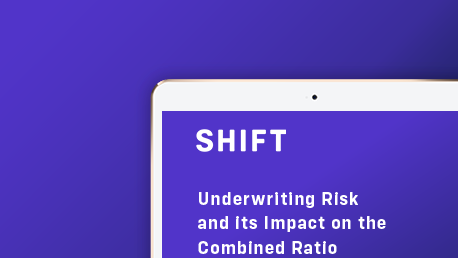The subrogation and recovery opportunity
According to widely accepted industry estimates, approximately 15% of P&C claims are closed with missed subrogation opportunities, representing a cost of between $15-20 billion annually, with some calculations putting the cost at closer to $30 billion. And while these missed opportunities have historically been viewed as the cost of doing business, profitability challenges have driven the industry to prioritize the application of best in class solutions.
"Best in class subrogation and recovery efforts can positively impact the combined ratio by up to 4%"
Using artificial intelligence (AI) and generative AI (Gen AI) to detect hidden subrogation and recovery opportunities, assess liability and
likelihood of recovery, as well as surface and apply relevant legislation is one of the most effective ways to modernize this critical process. In fact, best in class subrogation and recovery efforts can positively impact the combined ratio by up to 4%, and Shift’s own research has shown that insurers stand to recoup up to an additional 7% of a claim’s total value when AI is applied to the problem.
How AI-powered subrogation and recovery efforts drive profitability
1. Understand liability sooner in the process
The relationship between premiums and subrogation is significantly influenced by time. Even if insurers raise rates, most claims are based on previously paid premiums, and retroactive increases aren't possible. Effective subrogation and recovery are essential to bridge this gap. AI enhances these efforts by maximizing opportunities and recovery likelihood, positively impacting the combined ratio. Insurers have 2-5 years (up to 10 in some areas) to pursue recovery, but inflation reduces the real value of recovered amounts. Efficient subrogation processes help insurers retain more of the claim's value.
2. Augment the skills and expertise of their employees
Building expertise in subrogation and recovery can take years, and scaling this expertise is challenging. Labor issues like "The Great Resignation" have left insurers short of skilled employees, impacting the combined ratio. AI enhances efficiency by scaling expert knowledge, allowing less experienced staff to contribute significantly. This is crucial as AI can help insurers recoup up to an additional 7% of a claim's value.
3. Accurately and efficiently uncover hidden opportunities
Insurance is highly regulated, with varying rules across jurisdictions, complicating subrogation and recovery efforts. AI mitigates these challenges by applying jurisdiction-specific analysis, ensuring opportunities are correctly identified. For insurers operating in multiple areas, AI helps navigate local regulations, preventing missed opportunities and improving recovery rates. AI models, attuned to jurisdictional nuances, accurately identify claims with high recovery potential, reducing errors and enhancing profitability.
Read the full article: AI Powered Subrogation and Its Impact on the Combined Ratio
Learn More: The Combined Ratio Series
This is the second in a series of commentaries on the combined ratio problem facing the insurance industry. For further discussion of this topic and how the application of AI is addressing this challenge throughout the policy lifecycle, continue reading.
All Posts in the Series
- The Combined Ratio Problem: Closing the Gap Between Claims Costs and Premiums using AI
- Underwriting Risk and its Impact on the Combined Ratio
- AI-Powered Subrogation Detection and its Impact on the Combined Ratio
- Claims Fraud Detection and its Impact on Combined Ratios
About the Author



